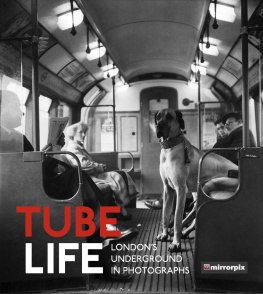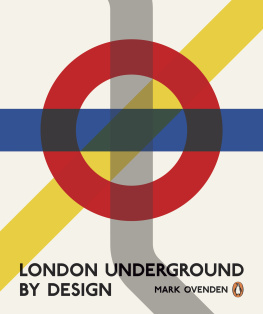PENGUIN BOOKS
Published by the Penguin Group
Penguin Books Ltd, 80 Strand, London WC2R 0RL , England
Penguin Group (USA) Inc., 375 Hudson Street, New York, New York 10014, USA
Penguin Group (Canada), 90 Eglinton Avenue East, Suite 700, Toronto, Ontario, Canada M4P 2Y3 (a division of Pearson Penguin Canada Inc.)
Penguin Ireland, 25 St Stephens Green, Dublin 2, Ireland (a division of Penguin Books Ltd)
Penguin Group (Australia), 707 Collins Street, Melbourne, Victoria 3008, Australia (a division of Pearson Australia Group Pty Ltd)
Penguin Books India Pvt Ltd, 11 Community Centre, Panchsheel Park, New Delhi 110 017, India
Penguin Group (NZ), 67 Apollo Drive, Rosedale, Auckland 0632, New Zealand (a division of Pearson New Zealand Ltd)
Penguin Books (South Africa) (Pty) Ltd, Block D, Rosebank Office Park, 181 Jan Smuts Avenue, Parktown North, Gauteng 2193, South Africa
Penguin Books Ltd, Registered Offices: 80 Strand, London WC2R 0RL , England
www.penguin.com
First published in Penguin Books 2013
Copyright Peter York, 2013
Cover image: Peter York
Cover design: Jim Stoddart
All rights reserved
The moral right of the author has been asserted
ISBN: 978-1-84-614680-0
| Camila Batmanghelidjh and Kids Company | Mind the Child
The Victoria Line |
| Danny Dorling | The 32 Stops
The Central Line |
| Fantastic Man | Buttoned-Up
The East London Line |
| John Lanchester | What We Talk About When We Talk About The Tube
The District Line |
| William Leith | A Northern Line Minute
The Northern Line |
| Richard Mabey | A Good Parcel of English Soil
The Metropolitan Line |
| Paul Morley | Earthbound
The Bakerloo Line |
| John OFarrell | A History of Capitalism According to the Jubilee Line
The Jubilee Line |
| Philippe Parreno | Drift
The Hammersmith & City Line |
| Leanne Shapton | WaterlooCity, CityWaterloo
The Waterloo & City Line |
| Lucy Wadham | Heads and Straights
The Circle Line |
| Peter York | The Blue Riband
The Piccadilly Line |
The Born-again Tubist
When I started this book I hadnt been on the Tube for twenty-five years. Or more. Very early in my working life, in my first and only job (in the seventies, 44 Lower Belgrave Street, next to Lord Lucan), I managed to get half a secretary that was the word then and access to the taxi account if I had a pretext. Over the next decade I worked up to a whole PA and unlimited taxis. I wound down my basic commutes variously from Bayswater, Queens Park, Sloane Square and South Ken, since you ask over the years and became privatized. The man in the back of the cab.
By the mid eighties I practically never stepped on anything run by London Transport. But I had developed a massive working InterCity rail habit, mainly Go North!, plus a fortnightly trek to West Country clients, Bath or Bristol from Paddington. When clients were paying I went first class, otherwise not; my version of Keeping it Real.
So I was almost completely out of touch with the Tube. Id missed most of the Tubes great decline I turned over those pages in the Evening Standard and then its nineties revival. So I was surprised to find just how fit most of the Tube seems now spectacular new stations, assiduously restored old ones, clean new trains and just how much I actually enjoyed my rides, as I called them.
When I started Tubing again I was like the Bateman character who asked the bus driver to take him to Sixty Eaton Square. I didnt know how to use the ticket machines and I didnt know what an Oyster card was I thought it was like a Nectar card (call yourself a social commentator?). I didnt want to learn on the job, backing up an angry queue, so initially I bought tickets for journey X to Y at the window each time. Then my PA said that was idiotic, got me an Oyster card and everything was wonderful. I came to love the Tube.
In his brilliant Underground, Overground: A Passengers History of the Tube, Andrew Martin describes himself as a person who regards a Tube journey as an end in itself. Im getting that way. Certainly in the first few weeks I became a positive Marie Antoinette of the Underground. I was forever telling people who turned out to have been taking the Tube five days a week over the last so many years that there was this marvellous system with conveniently placed stations everywhere you could want (Russell Square, can you imagine!). And you only had to slap this Oyster card thing down at either end.
Id start retailing the last Amazing Tube Fact Id read about abandoned stations, deepest lines, all that and mortifyingly learnt that practically every man I knew was a Pub Quiz Champion in Tube questions. Everyone, I learnt, was fascinated by the Tube, and everyone knew more than me. Theres something there for every kind of nerd and wonk. And fogey (fogeys particularly like the Tubes inter-war Modernist architecture).
Not only that, I realized that the Piccadilly Line was special. It owned, in its central stretch, some places thatd been extraordinarily important to me but that Id lost touch with. Goodbye, Piccadilly, Farewell, Leicester Square. Covent Garden and Earls Court too. Id go round them or near them now but not quite to them any more. And Id be going for different reasons. To BAFTA or to a blockbuster opening at the RA, to Jermyn Street I never shook that habit but not to the Circus itself. Not the Dilly, not Eros, none of that. And not the giant first-run Leicester Square cinemas or the lovely vanishing cheap food places all round it.
Covent Garden too, an absolute centre of my world from about 75 the opening of Zanzibar in Great Queen Street, Blitz further down the road in the early eighties to 85, the opening of the Groucho Club in Dean Street. Or South Ken and Gloucester Road. I was there from 79 to 89 I lived about equidistant from the two stations but almost always went to South Ken. South Ken/Gloucester Road/Earls Court and Barons Court had all been material over that decade because so many of the happy tribal sterotypes I wrote about Sloanes and Mercs and Thems lived in those stucco cliffs (but not so much in the next-along bourgeois bits of Hammersmith, which like, say, Barnes, is somehow more Home Counties than deep London).
Once I started on my Tube crawl round the Piccadilly Lines fifty stations the minimum foray was up to the main concourse, one phone photograph, faade ditto, down nearest high street, talk to estate agent, get house details I realized the Piccadilly Line station was often the most interesting thing about the place. Its the escape route, the embassy of Modernity, the outward and visible symbol of an inner world completely different from the overground suburb or the bleak transitional stretches of, say, Caledonian Road.



















